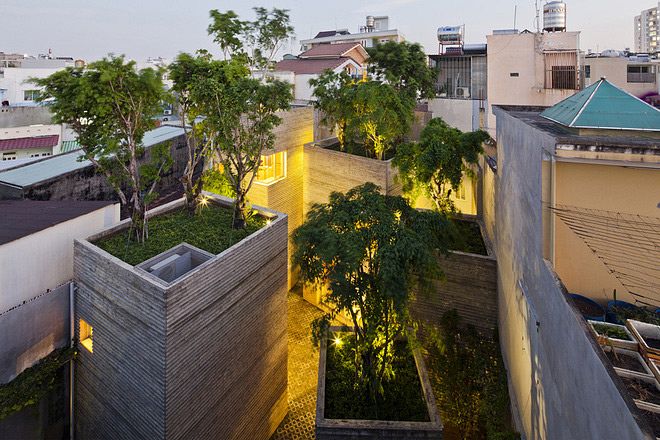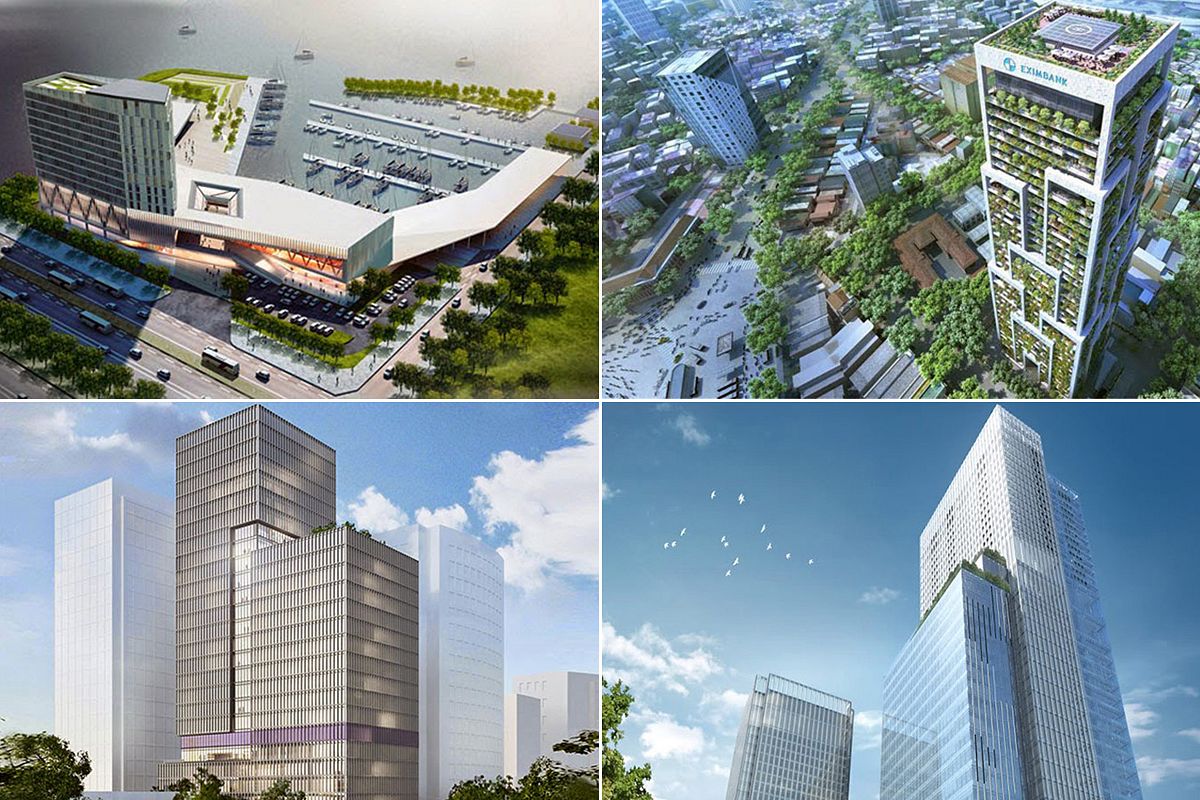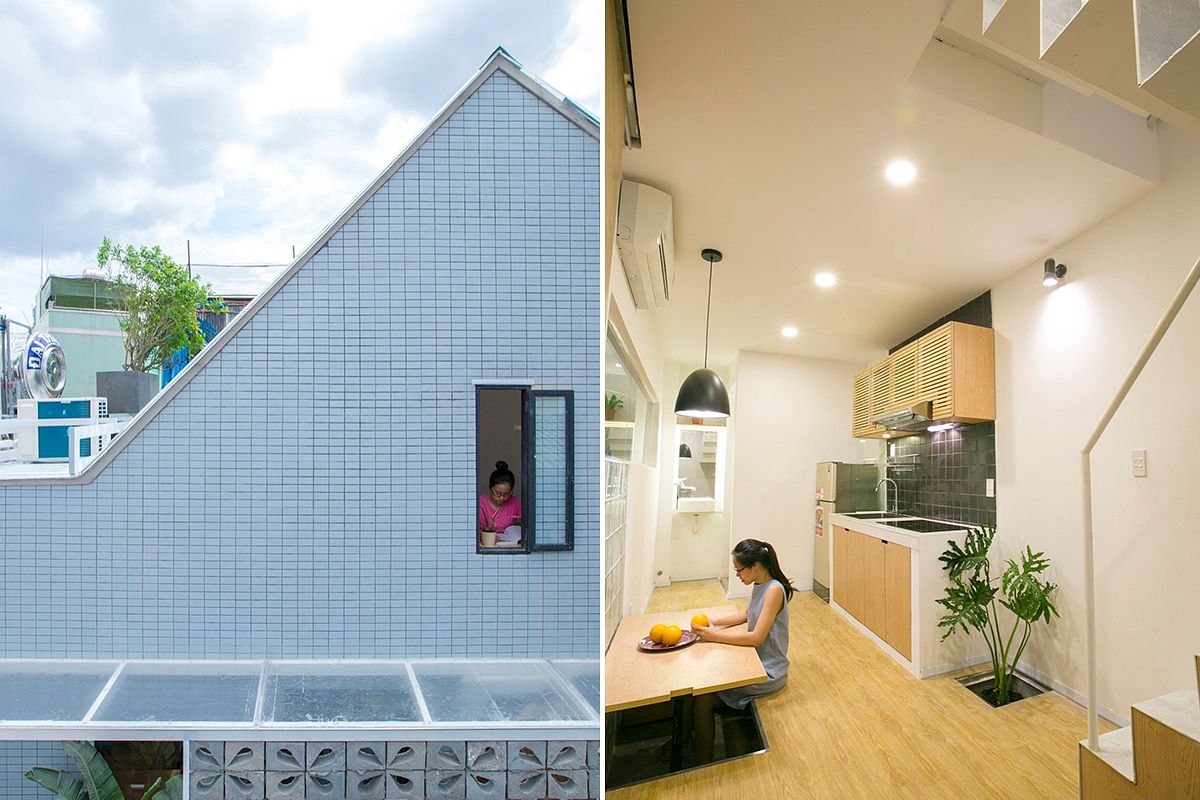Dr. Michael Waibel, along with Hilbert Henning, have launched the TP. Ho Chi Minh - MEGA City project to visually document Saigon’s rapid urban development. The project is currently being assembled and the authors are seeking submissions. For more information, click the link above.
We spoke with Michael about the motivation behind the project which has both personal and academic roots for its organizers.
This is part 2 of the interview. Part 1 can be found here.
Q: When did you start the project?
The specific preparation for this project started in March 2013 during a stay as a visiting research fellow at the University of Social Sciences and Humanities. In the morning, I usually gave lectures and during the afternoon, I would go to the top of high-rise buildings all over the city. In a few cases security guards caught me but mostly I was able to reach the top of the building and to take photos from above of the city landscape.
At that time I was also able to involve Henning Hilbert from Vietnam-German University as a co-publisher who possesses a great interest in urban development, too. Since then, both of us have been collecting photos and have been trying to raise further funds from potential sponsors. Among others, the German Cultural Goethe Institute will support this project. The whole budget of the book comprises about 10,000 USD. Almost all of this will go to the publishing house to secure high-quality printing.
In this context, I would like to make very clear that this is a pure non-profit project, the publishers and contributors don’t receive any honorarium and pursue no financial interests. But contributing, photographers will receive a complimentary physical copy upon request.
Q: How much do you view this as an art book versus an academic piece?
As an academic, I have to say it is an academic book because one of the key aims is to illustrate the changes to the city over time. That being said, the book will have an attractive coffee table format, 30x30 cm, printed on high-quality paper and should be interesting not only for academics but for anybody living or interested in Saigon or mega city development, in general.
Though our aim is not to convey a beautified image of Ho Chi Minh City but to throw a documentary lens on it, we want to include technical, well-made and expressive photos. However, we won’t accept photos, which are apparently strongly “photoshopped”, e.g. modified by graphic software programs.
Q: What is your desired outcome for the book?
Primarily, we would like to document the various dimensions of urban development of this emerging mega city not only over time, but also along a spatial scale.
From the city centre to the urban-rural periphery and all along the social scale - from the female labour migrants living in dilapidated boarding houses close to industrial zones to the new consumers living in fancy, rich neighbourhoods in An Phu.
In this way, we would like to contribute to an enhanced awareness and understanding of Ho Chi Minh City. The city possesses a very high degree of heterogeneity and diversity of people from different socio-economic and cultural backgrounds.
Our notion of a mega city is therefore a rather positive one. We prefer not to regard it as a place of disaster and un-governability but rather as a place of opportunity and innovation.
Further, we would like to raise public acknowledgement of the traditional low-rise, high-density neighbourhoods. Policy-makers, according to my experience, often overlook the inherent urban qualities of those areas. Instead, the political elites seem to buy too much into Singapore’s urban development model, based on modern high-rise buildings. Singapore is a very modern global metropolis but it has little soul and is also quite boring. Saigon has every right to develop, there is still much potential for this. But it should preserve its vivid identity, which is a dynamic blend of manifold historical and current influences.
Q: What was your methodology for coming up with section for the book?
Honestly, we followed a gradual and iterative approach in developing the 12 thematic chapters. One important aim was to cover various aspects of mega city development in terms of spatiality and social dynamics. Pictures taken from airplanes and high-rise buildings give an initial ‘big-picture’ of the mega-urban region. The chapter ‘Faces of Saigon’ will show the immense diversity of people living within the mega city. As mentioned previously, one chapter will illustrate the changes in the physical urban fabric over time. Another chapter will illustrate the variety of housing within the mega city and another one will focus on the low-rise, high-density neighbourhoods within the city’s alleys. There are also chapters that are even narrower in scope such as one chapter illustrating the demolition and development of Thu Thiem peninsula where a new central business district is in the making.
At the current stage of development, this photo book we are still open for new thematic chapters. For example, I recently saw a section at Saigoneer about graffiti paintings in Ho Chi Minh City. This could be topic worth considering for inclusion, as well.
But all this will mostly depend on the material we hope to receive from external contributors. Our principal aim as publishers is not to include a maximum amount of own photos into this book. In contrast, the book should develop into a vivid view of the inhabitants’ subjective perception of their own city.
Q: Is this the first of many books on growing cities or is this a one-off?
If this project works out well and will find enough interest after publication, my plan would be to publish another photo book about Hanoi City in the coming year.














